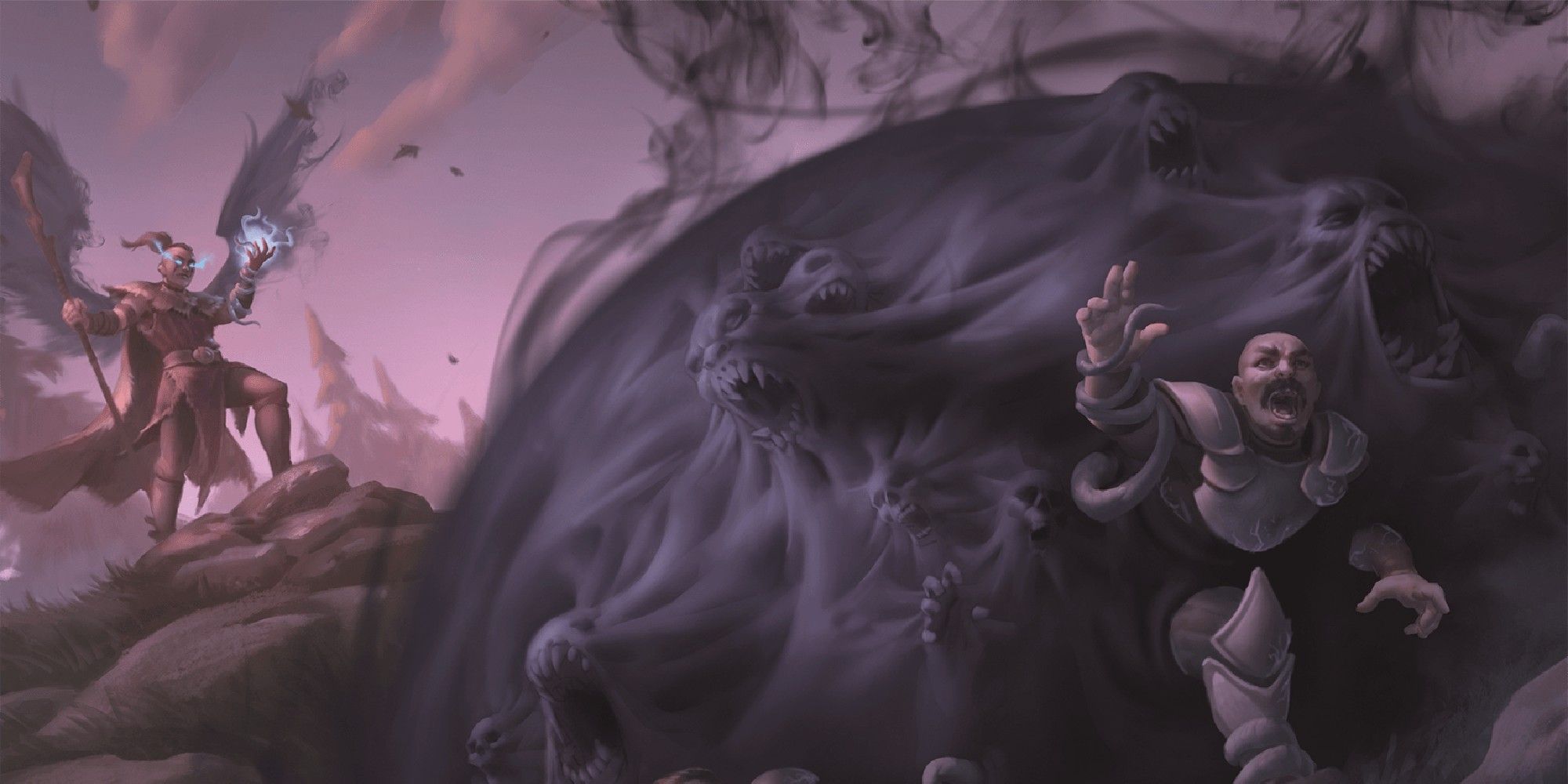The most powerful creatures in Dungeons & Dragons have locations of great significance that give them access to unique or strengthened abilities. These powers are represented by lair actions, which makes fighting a creature inside of one immensely more challenging.

Related
Dungeons & Dragons: The Best Feats For A Sorcerer
Since sorcerers are fairly straightforward, most good caster feats will fit in a sorcerer build, but here are some of the best choices.
While designing your own villain or monster for your players to fight, you might also want to give them their own lair actions which make encounters against them more interesting. Luckily, there are plenty of similarities to printed lair actions that are easy to make use of in your own campaign.
10
Build The Lair First
Considering the home of the creature your players are going to fight is the most important aspect of creating lair actions. Not only do the general themes inform possible actions, but the size and shape will give you guard rails and set limits.
A cave structure of an earth elemental might allow you to create rock formations or generate earthquakes, whereas a swamp might involve plant growth or oozes. If the lair is generally small, then your villain might be hurting itself by casting a fairly wide area of darkness only to blind itself.
9
Connect The Lair Actions To Lore
More so than what is physically available to your monster inside its lair, lair actions are what it is able to accomplish while connected to its place of rest or base of operations. An Elder Brain is able to boost its psionic powers and control the minds of intruders, but only while inside its lair.
The physical aspects of your monster’s lair might not be involved at all in the creation of lair actions, rather just enhance the abilities your monster already has. Consider your creature at its most powerful, and what kinds of actions it would take based on its goals and motivations.
Example: All of Orcus’s lair actions relate to his status as the Demon Prince of Undeath, such as resurrecting corpses as minions and summoning skeletal hands to restrain anyone caught by them.
8
Have At Least Two Lair Actions
The rules of lair actions do not allow the creature to repeat the same one two rounds in a row. This means you will have to have at least two in order to keep the encounter dangerous and interesting, while reminding players to always be vigilant.
Most monsters with lair actions have three to choose from, which doesn’t allow your players to always know which lair action will come next, while also not giving you too many actions to consider. In an ideal scenario, you don’t have less than two or more than three, or it might make the fight too tedious.
7
Create Terrain Hazards
Most creatures with lair actions have at least one that creates a section of the terrain too hazardous to cross, forcing your players to find new strategies or routes. This could be a swirl of intense wind surrounding the creature making ranged projectiles useless, or pits of slime that slow movement.

Related
Dungeons & Dragons: The 20 Best Adventures For Low-Level Parties
These adventures are perfect for low-level D&D parties.
These could also be area-of-effects that require Dexterity saving throws to dodge or avoid, such as falling rocks or erupting geysers. These lair actions are meant to represent the general dangers of the lair itself, rather than a targeted attack by the creature.
6
Disrupt Line-Of-Sight
In order to lock-down players who have perched in ideal locations within the lair or are uncomfortably close to the creature itself, you need to create roadblocks that shut them down. For example, Fraz-Urb’luu can cause doors to become walls, and vice versa, forcing players to reroute themselves or become trapped.
The simplest way of changing the terrain in this way is by changing surfaces into different materials. Graz’zt can use a lair action to change all smooth surfaces into mirrors, making all Dexterity checks have disadvantage, and forcing stealthy characters to adopt a new strategy.
5
Summon An Additional Monster
Especially if your creature is not already surrounded by various minions, they can use lair actions to create another target for your players. This is to redirect their fire and not have your creature lose all of its hit points in only a couple of rounds due to being the only target.
This can be a simple creature that represents the power of your monster, such as a green slime summoned by Juiblex, the Demon Lord of Slime. Monsters with illusory or conjuration powers might even create duplicates of themselves, causing your players to use up resources or double their efforts.
4
Target A Single Player
While it’s fun to have a plethora of rocks falling on the battlefield or waves sweeping them away, some lair actions are good for targeting a single player and removing the creature’s biggest threat. This usually requires a saving throw but can immediately remove that player from the fight for a short time.
A balhannoth uses its abilities from the Shadowfell to make itself invisible to a single target, giving them disadvantage to all attacks against it. This could also be a charm effect, turning that player against the rest of their party while also giving the creature a new minion to direct.
3
Give Them Access To Spells
Especially for creatures that are adept at magic, some lair actions simply give them access to their most potent spells. This can even remove the requirements for spell slots or once-a-day rules that restrict that creature’s spellcasting in locations other than its lair.

Related
Dungeons & Dragons: 20 Best Legendary Magic Items
These legendary magic items certainly live up to their title.
This spell should be the one your creature is most known for or one associated with its powers, goals, and alignment, otherwise it more resembles a legendary action. For example, a morkoth can cast a variety of spells with its lair action associated with its ability to quickly move within its underwater domain.
Lair actions that are spells don’t have to be ones the creature already has access to.
2
Give Beneficial Lair Actions To Good-Aligned Creatures
Not only are evil creatures allowed to have lair actions, even holy creatures or mythical beasts can use their lair actions to benefit heroes. The Ki-Rin can use its lair actions to create useful objects out of almost any material that players can use in their travels or even as simple comforts.
These lair actions can also be punishments for players acting out of alignment or attempting to harm the creature, such as a form of imprisonment or stolen items. More powerful lair actions by allied creatures can even be a tool for the party wanting to lure monsters into a trap within the lair.
1
Get Creative With The Definition Of Lair
Not all lairs have to be buried within mountains or inside the ruins of an ancient castle, as a creature’s lair is simply any location associated with it. A pirate captain might use their ship as its lair, able to use magic to control the rigging like tangling ropes or even fire cannons at will.
Giving lair actions to flying creatures, you might even consider the sky itself to be its lair, allowing it to control the air currents or summon storms during the encounter. As long as the location is directly tied to the creature, you can get away with adding unique lair actions to almost any environment.
Any vessel a merrenoloth is using automatically counts as its lair.






















Leave a Reply